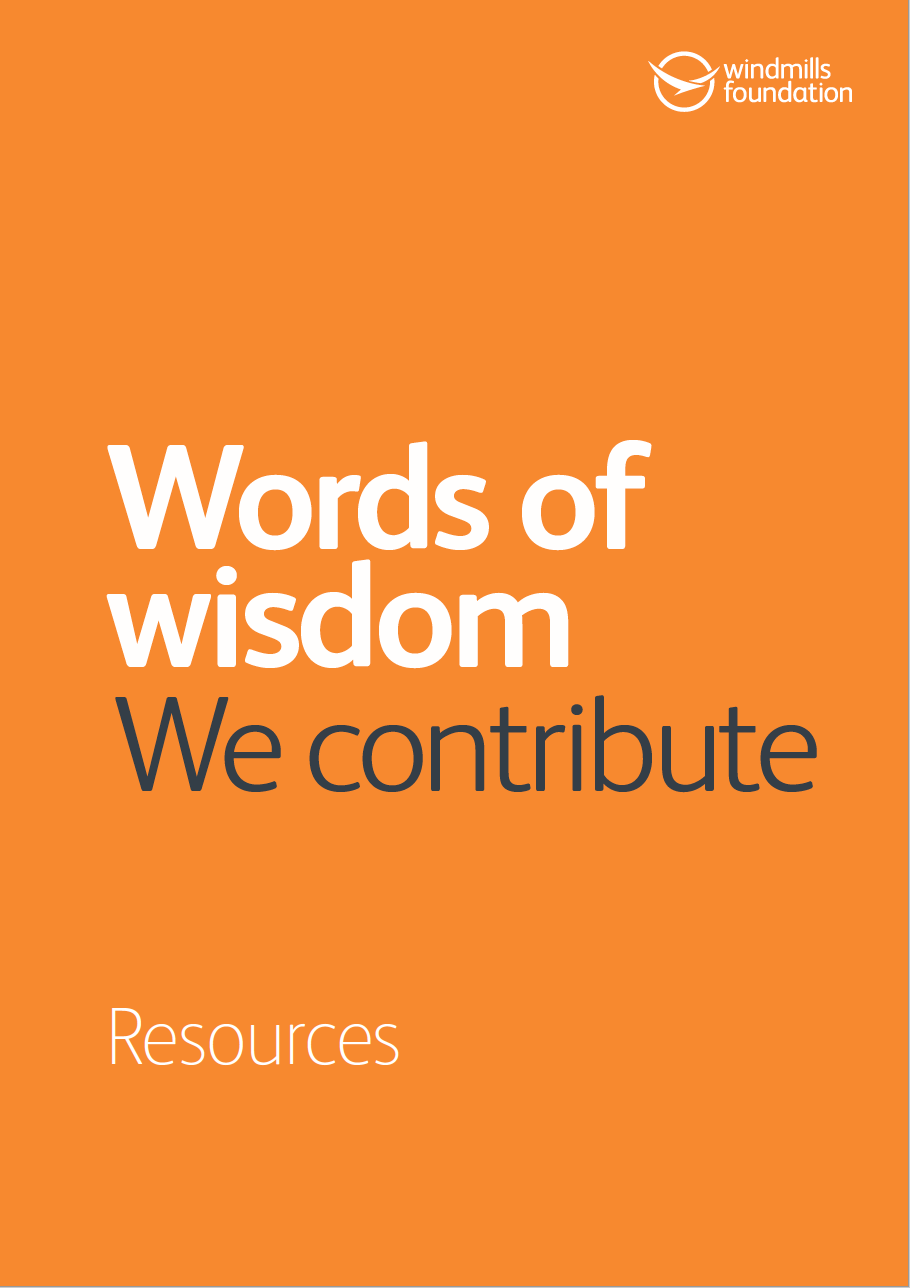There are many creative ways to make older people smile in your community. The smallest action can make a huge difference. We can all leave our lasting legacy.
Having explored what you care about in your community and the combination of skills you have to offer, your challenge is now to create a SMILE which brightens up someone’s day.
This section will help you develop a creative plan to:
- Share the skills you love for a purpose you care about in a
- Meaningful way that excites and interests you, which makes an
- Impact and leaves a
- Lasting legacy which engages
- Everyone
The following questions and prompts may help you create your own unique SMILES:

We care about… and we’d like to help by sharing our skills in…
Highlight what you really care about and list the key groups of skills from your Party Group activity that you would really love to use both individually and as a group.
Example:
“We really care about older people who are isolated and lonely and would like to brighten up their day by using our Creative, Communication, Caring and Musical skills.”

Our most meaningful and exciting idea is to…
Think creatively about how you can combine your skills to meet the genuine need. Firstly create as many ideas as possible, then focus on those that excite you the most, that maximise your skills and can be achieved in the time and resources available.
Example:
“We will organise a tea dance, bingo session and ‘Chatter Lunch’ in our local care home to brighten up older people’s days. Or as an alternative “we will use communications technology to sing Christmas carols, read out poems and find out more about each other.”
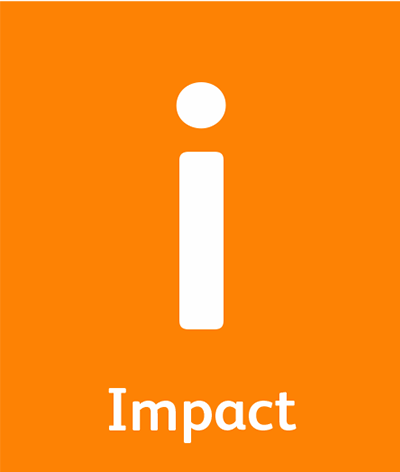
We hope to make a difference by…
Think about why your act of kindness would make people smile and the outcome it will produce. It could range from giving people hope, making people laugh, inspiring positive action and improving wellbeing.
Example:
“We will give older people who may be isolated, lonely and vulnerable a sense of purpose and meaning by showing that we genuinely care about them and asking them their story.”
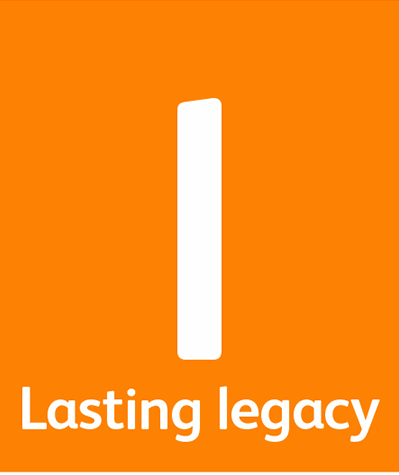
We will keep the SMILE going by…
How are you going to leave a lasting legacy? This may include continuing the relationship over time, passing the challenge on to younger peers, involving more people and creating a ripple effect.
Example:
“We will keep the smile going by making the tea dance, bingo session and chatter lunch regular events, adopting new Grandparents and using new technology to stay in touch.”

People who can help us are…
List all of the people who can help support you and can get involved. These may range from family members, teachers and friends to local businesses, charities and volunteers.
Example:
“We can make the tea dance fun by engaging a local musician to play the piano, getting a prize for the quiz from a local hairdresser, persuading the local bakery to donate cakes for the chatter lunch and asking our peers to bring in their favourite games to play.”

We shall never know all the good that a simple smile can do.
Mother Teresa
Why this session is important
To help your group to develop a creative SMILE plan to:
- Share the skills they love to meet a need for older people in their local community
- Scope out a practical way of making a difference that is meaningful, exciting and interesting to them
- Consider how and why their acts of kindness will make older people SMILE and what the impact and outcome of these will be
- Create a lasting legacy that will keep older people smiling over time
- Engage with a wider support community to ensure everybody smiles together
What you will need:
- We Contribute Activity for each group
- We Contribute Resources
- £10 per group (optional)
- Paper/pens
- 30 minutes (depending on time availability)
How to do it
This session builds on and combines with the learning from We Care (Realising the need in our community) and We Count (Making a difference with our unique skills and talents).
Through a creative, step-by-step process you will help each group (or whole class) create a SMILE plan which outlines how they will:
Share the skills they love using for a purpose they care about in a
Meaningful way that excites and interests them, which makes an
Impact and leaves a
Lasting legacy which engages
Everyone
Examples of previous SMILEs can be found in 60 Ways to SMILE.
Each SMILE plan may need a few iterations to ensure a balance is reached between creativity of ideas and realism of delivery given the practical time and resources available.
Having established each SMILE plan a preplanned time schedule for delivery will need to be outlined. This is flexible and dependent on the context, needs and opportunities available but in the past has ranged from a couple of hours per week for 4 – 8 weeks, through to a day or week long challenge, as well as SMILE being established and embedded as a thread throughout a whole year’s curriculum.
We contribute
Start by re-capping on the two previous sessions ‘We Care’ and ‘We Count’ asking individuals what they have learned so far.
Hand out the SMILE Invitation. You will see in the resources section there are two versions of this – one involving a £10 contribution to the challenge and one without. While the challenge does not need any financial input, providing £10 gives each group a sense of responsibility, ownership and social enterprise.
Whatever the choice, the SMILE Challenge is about Making a Difference not making money. You may want to use existing resources, try fundraising, ask for sponsorship from local businesses, get five individuals to donate or work to gain £2 each, get the previous year group to pass on the £10 etc…
If you have exhausted every avenue, but would like to include the £10, please get in touch and we will see if we can help. We encourage you to be creative if you choose to include use of the £10.
Give each group the SMILE Template and use the prompts to work through this step by step.
In the ‘Share’ section, ask the groups to highlight what needs facing older people they really care about (from the We Care activity) and list the key groups of skills from the Party Exercise that they would really love to use both individually and as a group.
For example, “We really care about older people who are isolated and lonely and would like to brighten up their day by using our Creative, Communication, Caring and Musical skills.”
In the ‘Meaningful’ section help, each group think creatively about how they can combine their skills to meet the genuine need. Encourage individuals to create as many ideas as possible, and from the list focus on the one that excites them the most, that maximises their skills and can be realistically achieved in the timescales and with the resources that are available.
For example… We will organise a tea dance, bingo session and ‘Chatter Lunch’ in our local care home to brighten up older people’s days. Or as an alternative “we will use communications technology to sing Christmas carols, read out poems and find out more about each other.”
To help explore possibilities you may find it useful looking at 60 Ways to SMILE and giving groups a few practical suggestions.
In the ‘Impact’ section, encourage groups to think about how and why their act of kindness will make people SMILE and the outcomes this would produce. This could range from giving older people hope, creating a sense of belonging, making people laugh, inspiring positive action and improving wellbeing.
For example… “We will give older people who may be isolated, lonely and vulnerable a sense of purpose and meaning by showing that we genuinely care about them and asking them their story.”
In their plans, ask groups to identify how they hope to capture the SMILES – photos, film clips, drawings, talking heads etc.
In the ‘Lasting’ legacy section you may need to give groups a bit more of a helping hand as this may need some ingenuity to work out. How are they going to keep the SMILE going over time and begin to embed it as part of a legacy? This may be giving an older person something to treasure, continuing the relationship over time, passing the challenge on to younger peers, involving more people and creating a ripple effect through social media.
For example… “We will keep the smile going by making the tea dance, bingo session and chatter lunch regular events, adopting new Grandparents and using new technology to stay in touch.
One very simple way you can create a lasting legacy is by building up a strong relationship with a care home, community or voluntary group over time, encouraging different year groups to continue working on an ongoing project or relationship, or embedding the activity within mainstream curriculum.
In the final ‘Everyone’ section, encourage groups to firstly think of all the barriers that might stop them achieving their SMILE Challenge and also list the actions required to begin to make their ideas a reality. From their list of barriers and practical steps, help each group list the core groups of people who can help them, who else can support them and members of their wider community who can get involved. These may range from family members, teachers and friends to local businesses, charities and volunteers.
For example… “We can make the tea dance fun by engaging a local musician to play the piano, getting a prize for the quiz from a local hairdresser, persuading the local bakery to donate cakes for the chatter lunch and asking our peers to bring in their favourite games to play.
Ensure every group member has a set of actions to either do for themselves or ask other people to help with. Individuals may need access to computers, telephones, supportive colleagues etc. to help facilitate the process.
Once each group has completed their SMILE plan, ask them to present their ideas to their peers for constructive feedback.
Your groups are now ready to start the challenge – Good Luck and Enjoy!!
What other questions to ask/points to make
When enabling the delivery of each SMILE Challenge, the following actions may add value to the process:
- Find helping hands – it is always useful to have support staff, active parents, community volunteers and/or governors helping facilitate each group.
- Learn through experience – the whole essence of the challenge is to provide individuals a safe space to try new things out, stretch themselves, fail well and learn from the ups and downs of the process. You will find a set of Reflection Questions to help reflection that can be either asked or picked at random out of a hat by each group.
- Celebrate success – make sure the smallest of achievements are celebrated. We have created a set of Awards to celebrate particular contributions made throughout the experience. These can help build individuals confidence, enthusiasm and commitment. Alongside these awards you will also find a SMILE Certificate template which can be presented to all those who have taken part.
- Develop a habit – giving back is one of the five ways to wellbeing (Give, Relate, Exercise, Appreciate, Try – GREAT) and has major impact on mental health, confidence, sense of belonging and future employability. Encourage individuals to build on their SMILE experience, continue to help older people and develop a habit of a lifetime.
- Keep on Smiling – when we combine our skills and passions for purposes that matter to us, in places that we enjoy and with people we value, we come alive. Have a look at the ‘iCan’ activities and resources available to help individuals create inspiring lives, connect with their communities and contribute to better futures.
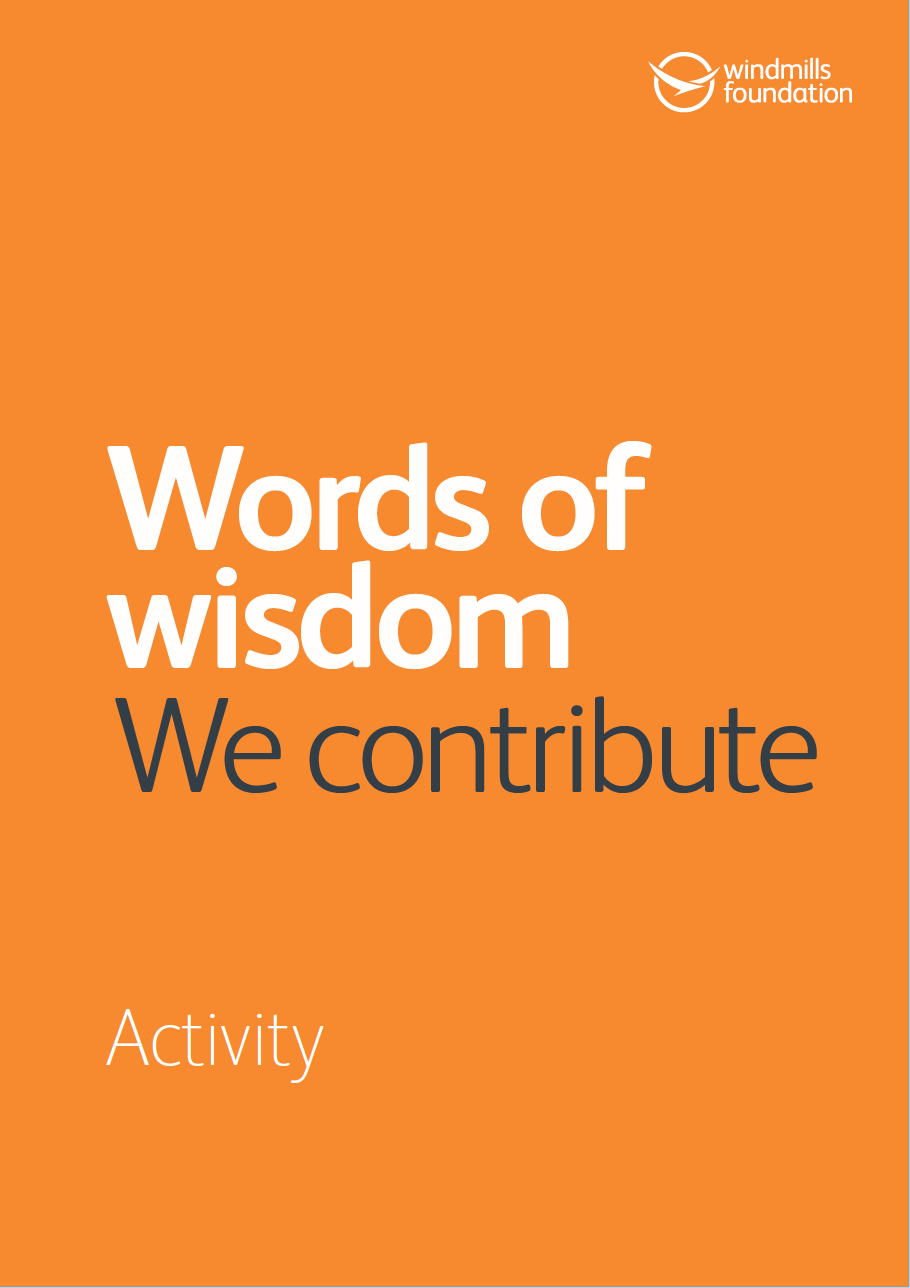
Words of Wisdom… We Contribute Activity
Download File (.pdf)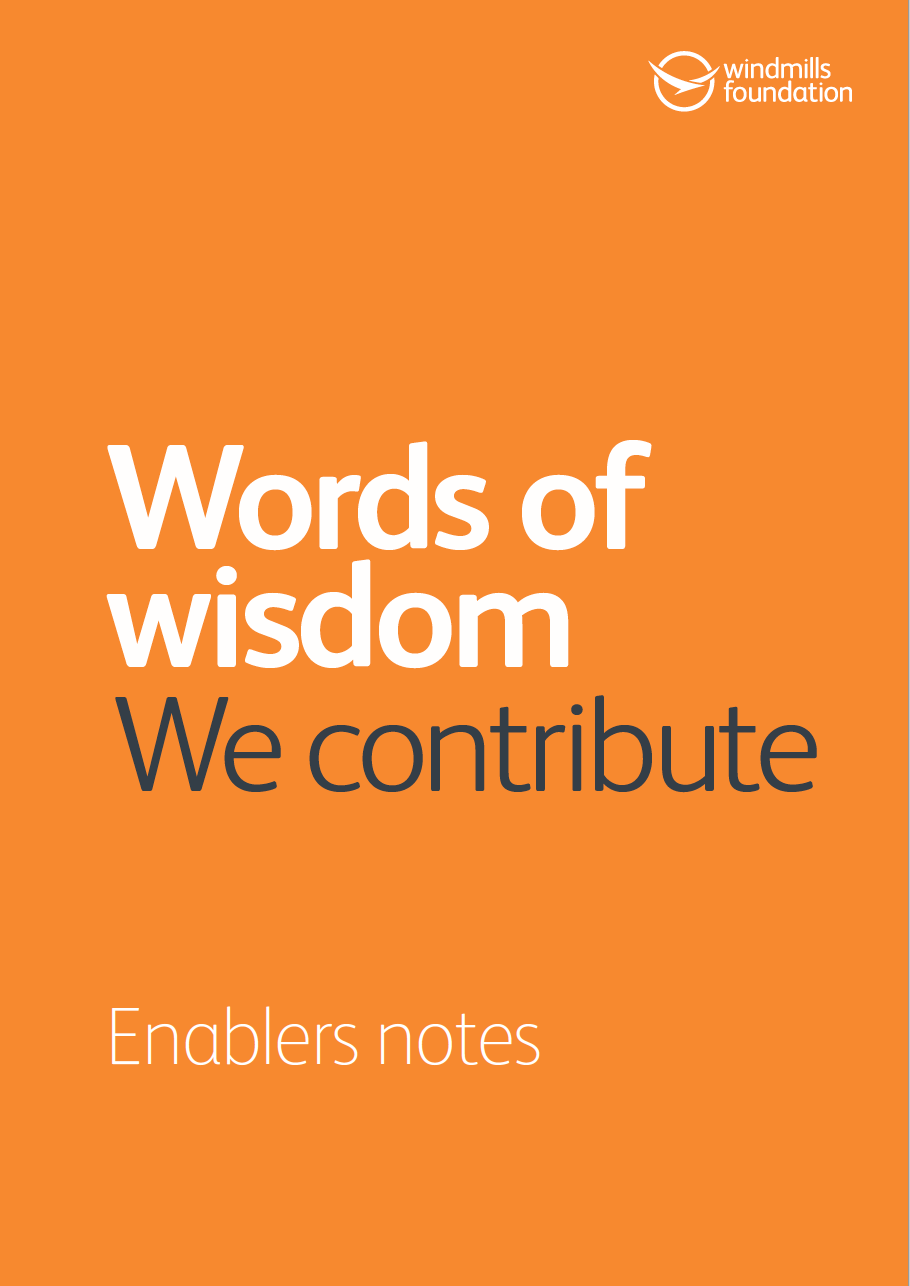
Words of Wisdom… We Contribute Enablers Notes
Download File (.pdf)